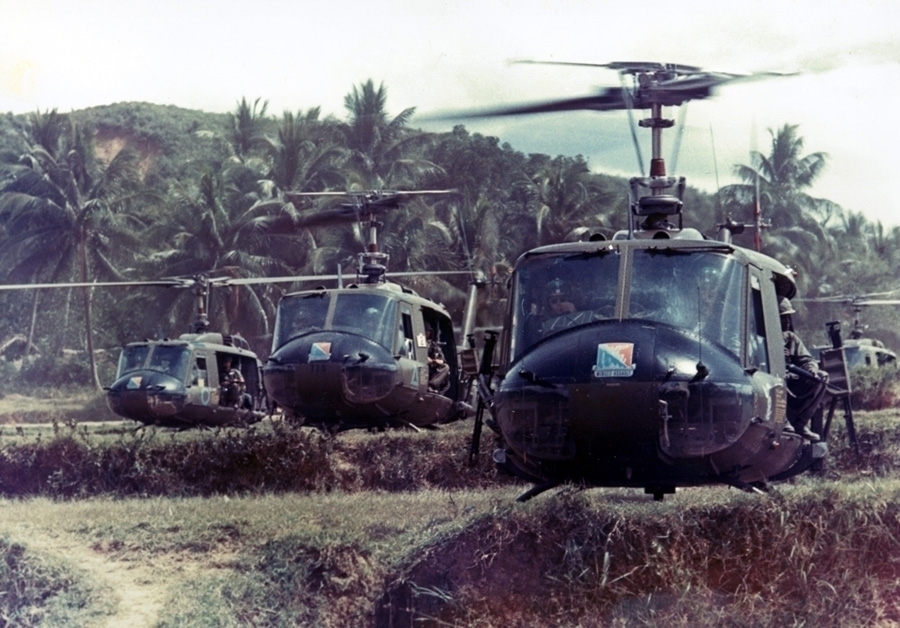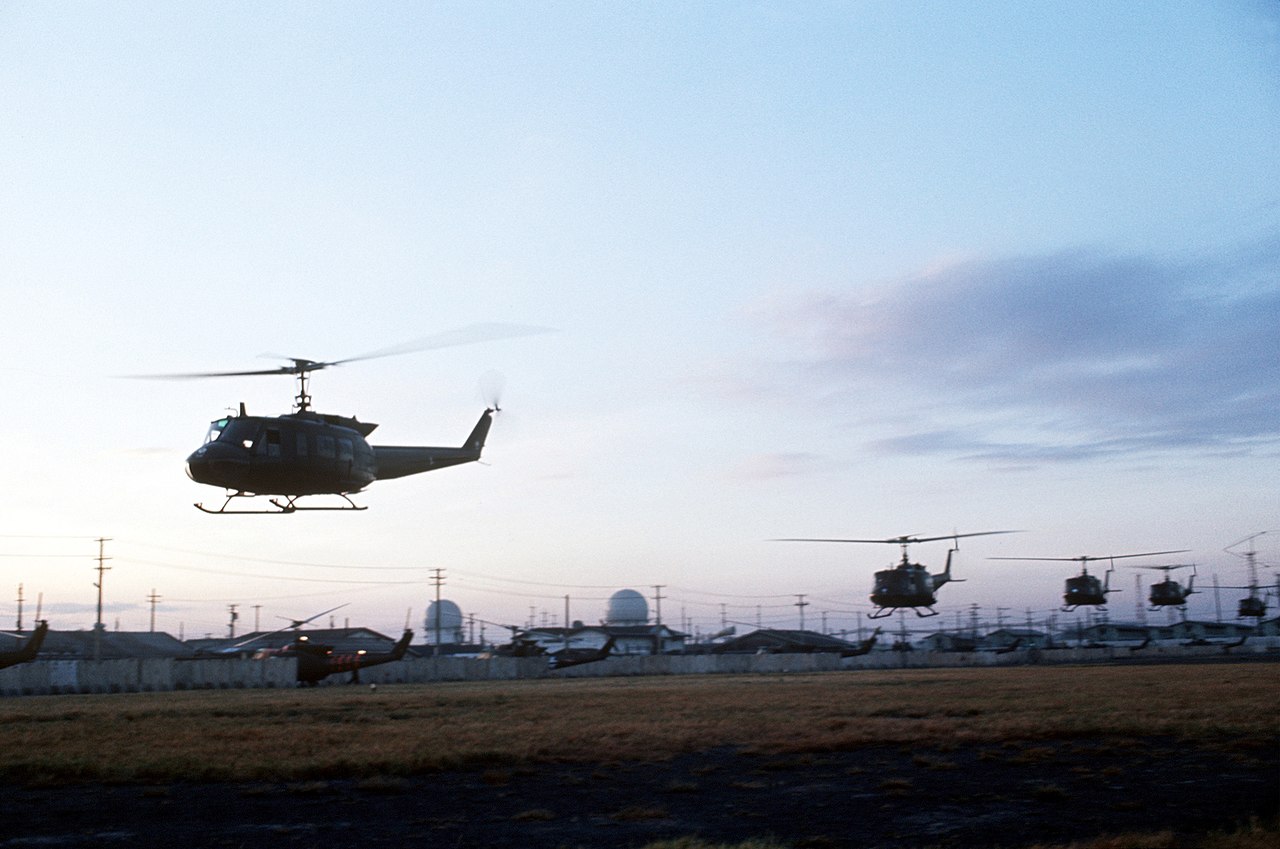Several US Army pilots enlisted in the war in Vietnam purely out of a desire to pilot the UH-1 Huey
A 1955 US Army competition for a new utility helicopter led to the development of the UH-1. It was used by the Army in a variety of roles, notably as an armed escort or attack gunship in Vietnam. The unofficial moniker “Huey” became popular because of the first Army designation, HU-1.
In his book UH-1 Huey Gunship Vs NVA/VC Forces in Vietnam 1962-75, Peter E. Davies explains how many US Army pilots volunteered for combat merely because they wanted to fly the UH-1. Following training, they were assigned to transport or gunship platoons, sometimes known as “slicks” or “guns.” Most would complete two or more combat deployments. Prior to flight school, recruits underwent arduous infantry training at Fort Dix, New Jersey, and Fort Polk, Louisiana, where they learned during Basic Combat Training that their primary duty was as soldiers, with a secondary function as helicopter crew members. At Fort Wolters, Texas, trainees (also known as “candidates”) then started the nine-month US Army Primary Helicopter School program, where they underwent extremely rigorous “Preflight” training as possible warrant officers.
For advanced flying training and instrument flight instruction, Warrant Officer Candidates (WOCs) next moved on to Fort Rucker, Alabama, or, starting in 1967, Hunter Army Airfield at Fort Stewart, Georgia. A specifically outfitted H-13 has an optional blanked-out exterior view and there were also two-seat TH-55 Osages.
Alfred S. DeMailo recalled a student who, after flying solo for the first time, decided to try out the empty instructor’s seat even though he knew he would have to change back to land. The student was obviously pleased with himself. Alfred S. DeMailo later served with the 229th Assault Helicopter Battalion (AHB) at Pleiku.
“Instead of landing and changing seats, he tried to do it in mid-air. Those trainers were so small that you could lean in them to make the thing turn. As soon as he stepped from the left side to the right, the aircraft tipped. He was not strapped in. He fell right through the rotor blades. That knocked the rotor blades off and the TH-55 went in.”
The Contact Phase at Knox Army Heliport, Fort Rucker, provided specific instruction on the UH-1B, C, and D, and successful candidates subsequently advanced to the Tactics Phase at the close-by Lowe Army Heliport, where they were trained for real combat situations. Al DeMailo explained, “We were expected to perform simulated missions like we were in Vietnam. They gave us classes on what altitudes to fly to avoid certain types of enemy fire – small arms or ‘0.51 cal’. They explained the trajectory of the weapons fired from an aircraft, especially when firing in a turn.”

In 1965, Fort Rucker trained 120 pilots for the UH-1B gunship aerial weapons training. 600 pilots were graduating per month by 1967. Even though several of them had fixed-wing flying experience, acquiring the complex, coordinated control skills needed for rotary-wing flying presented completely different difficulties. More hands-on piloting was required for helicopters than for fixed-wing aircraft. Later, candidates took on the challenging disciplines of instrument flying, night flying, and landing in confined spaces—skills essential for their operational operations in Southeast Asia.
In order to escape ground fire, fast “Contour flying” near to the ground was also mastered. Formation flying at night, without navigational lights, and using the leader’s cockpit instruments’ glow for station holding proved even more difficult. Al DeMailo claims that during combat, gunships occasionally left their lights on during nighttime missions because “we had a doctrine that we’d rather have the enemy shoot at the gunship than at the lesser armed “slicks”.”
Fog and monsoon rain in Vietnam severely taxed pilots’ ability to fly while blind. In order to move forward while flying the UH-1C “gunnies,” a pilot had to master taking off with a 1,000-lb overload, getting the aircraft to hover at a height of just three feet, and then dipping the nose slightly. This involved basically skidding and bouncing along the runway in order to build up enough speed and lift to rise higher. The crew chief and gunner occasionally had to leave the cockpit to temporarily lighten the load before takeoff.
Several pilots were alarmed to learn that the average lifespan of a US Army Aviator helicopter pilot in battle was just 19 minutes when they began a one-year combat tour. Starting in 1965, about all of each graduating class was deployed to Vietnam. The majority were between the ages of 19 and 20, with a few veteran “old men” in each platoon who were in their late 20s. The “new guys” picked up there how to use their freshly acquired skills in combat circumstances.
A tight “gaggle” of up to 40 helicopters, including ten gunships, was possible during airborne assaults, necessitating the quick improvement of close formation skills. In order to deliver heavy supplies to US Army firebases and outposts while coming under enemy fire, tactics including “pinnacle landing” on top of steep hills, slopes, and karst outcrops in the midst of unsteady downdraughts were also employed.
The opportunity to join a platoon in a fireteam of one or two gunships working with a scout helicopter and escorting “slick” assaults may be extended to experienced pilots with a track record of victorious, aggressive battle. Gunship pilots could “prep” an LZ ahead of the “slicks,” warn troop carrier crews of danger zones, and give them advice on which enemy guns to avoid when they lifted from the LZ. Thorough “prepping” by gunships and strike aircraft was crucial since the VC recognized the spots in an assault when the helicopter was most susceptible. Even in that case, there is no guarantee that the “slicks” will be able to land and subsequently take off without coming under enemy fire.
UH-1 Huey Gunship Vs NVA/VC Forces Vietnam 1962-75 is published by Osprey and is available to order here.

Photo by U.S. Army

